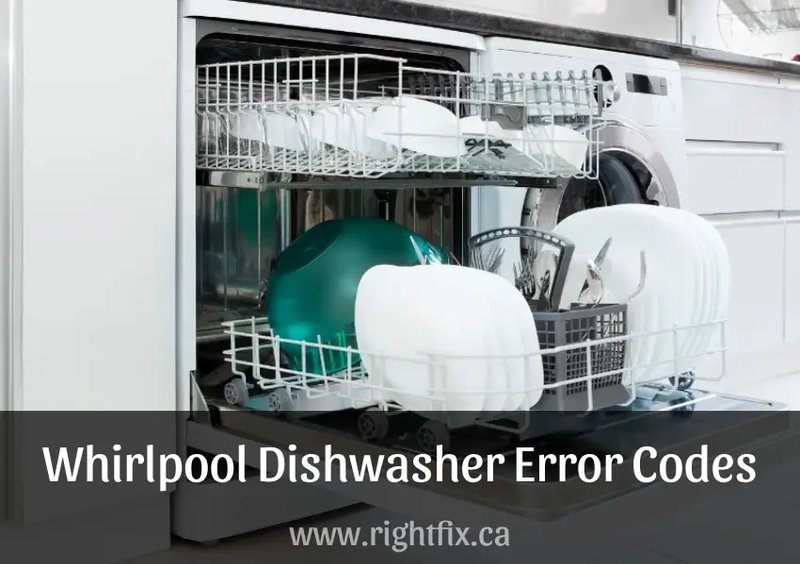
The Error Code OE on Whirlpool dishwashers is like your dishwasher waving a little flag and saying, “Hey, I’ve got a problem here!” Specifically, it’s telling you that there’s an issue with the draining process. Imagine trying to empty a bathtub with a clogged drain — the water just sits there, unable to go anywhere. That’s kind of what’s happening inside your dishwasher. Thankfully, understanding and resolving this issue isn’t rocket science, and I’m here to guide you through it.
Understanding Error Code OE and Its Causes
Now, let’s dig a bit deeper into what’s causing this stubborn Error Code OE to pop up. Fundamentally, this error is indicating a drainage problem. Think of your dishwasher’s drain system like a series of pipes and connections, much like the plumbing under your kitchen sink. When things go smoothly, water flows out without a hitch. But when there’s a blockage or malfunction, that’s when OE rears its head.
The most common culprit is a clogged drain hose. Over time, tiny food particles, grease, and soap residue can accumulate and form blockages. These blockages can restrict or completely block the flow of water, much like when you try to suck a thick milkshake through a narrow straw — not much is going to get through unless you clear the way. Sometimes, it’s not just the hose but the sink drain itself that might be causing trouble, especially if it’s shared with other appliances.
In other cases, the issue could be with the dishwasher’s pump. The pump is like the little engine that could, responsible for pushing the water out of the dishwasher. If it’s faulty or damaged, it might not have the oomph to do its job. Sometimes, the motor that drives the pump fails, leading to inefficient drainage. So, whether it’s the hose, the pump, or the motor, they all need to be in top form to prevent that pesky OE code.
Steps to Troubleshoot and Fix the Error Code OE
Ready to play detective and solve this mystery? Great! First, let’s tackle the most straightforward solution: checking the drain hose. Make sure the dishwasher is off and unplugged for safety (after all, water and electricity are not best buddies). Then, locate the drain hose — it’s usually at the back or side of the dishwasher. Gently disconnect it and check for blockages. If you see gunk, congratulations! You’ve likely found the culprit. Clear it out and reattach everything snugly.
Still seeing the OE error? No worries, let’s check the pump next. The pump is usually accessed from the bottom of the dishwasher. Once you have it in sight, look for any visible blockages. If the pump looks clear but isn’t running, it might be time to call in a professional to assess if it needs replacing. Sometimes the pump’s impeller might be jammed, or the motor could be faulty.
If those checks don’t resolve the issue, you might want to check the drainage path from the sink. Simply make sure that water flows freely through your sink’s pipes and that there are no blockages. By methodically checking these areas, you’re well on your way to a fully operational dishwasher.
Preventing Future OE Error Codes
Prevention, my friend, is better than cure — especially when it comes to maintaining your dishwasher. Just like brushing your teeth to prevent cavities, your dishwasher can benefit from a bit of regular TLC. Start by ensuring you’re scraping off large food particles from your dishes before loading them. This minimizes the chance of anything getting stuck in the drain.
Consider doing a monthly deep clean of your dishwasher. You can run an empty cycle with a dishwasher cleaner to help dissolve any grease and grime that might be building up unseen. Additionally, regularly check and clean the filter. It’s kind of like a lint trap in a dryer — if it gets too full, it can prevent proper functioning.
Lastly, keep an eye on the drain hose and pump, especially if you notice your dishwasher not draining as efficiently. A little attention can save you from bigger headaches (and more OE errors) down the line. With regular check-ups and mindful use, your trusty Whirlpool dishwasher will continue to serve you well without a hitch.
So there you have it — the mystery of the Whirlpool Error Code OE, unraveled and hopefully resolved. With a bit of understanding and some elbow grease, you’re now well-equipped to handle this hiccup and keep your dishwasher running smoothly.